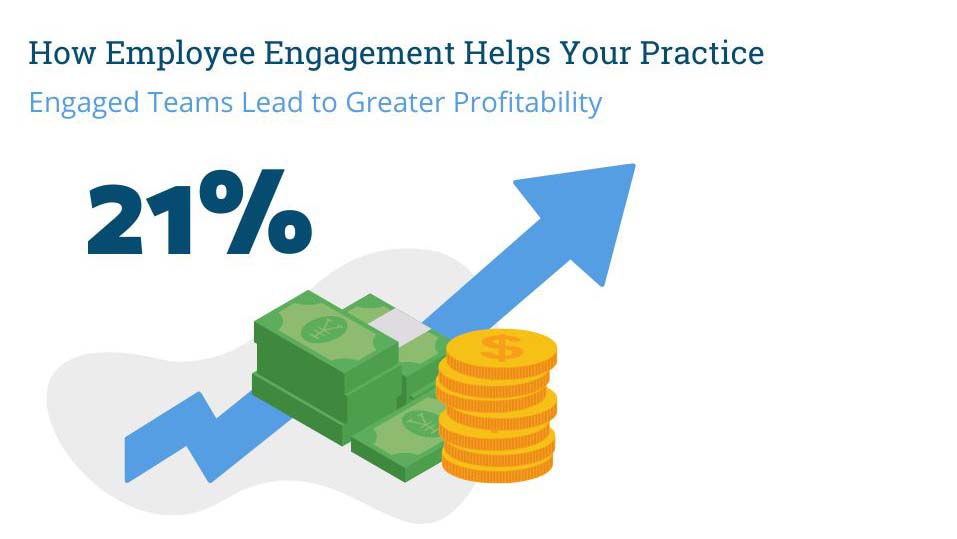When I work with clients, one of the things they always want to increase is employee engagement. For many, a more engaged team means more productivity, innovation, and efficiency. When people are engaged at all levels in a veterinary practice, problems get solved faster. Everyone is more accountable, and the practice owner and managers can focus on the future. It’s no surprise that research from Gallup and other performance management companies clearly demonstrates that organizations with more engaged employees are more profitable than their competitors.
Simply put, the practice with the most engaged team wins.

So here comes the hard part. How do you create more employee engagement? The big picture is that you must focus on the culture of your practice, the quality of coaching being offered to employees, and the connection people have to your practice’s vision. But closer to the ground, let’s take a look at some tactical ways that you can engage your team.
1. Chalk the field, but let them call the plays.
There are very few people who like to come to work just to be told what to do. No matter what their role, people want to have some ability to shape what they do and how they do it. The fastest way to disengage employees is to make all the decisions and then tell them to go execute a plan they had no hand in creating.
Empowering your team to help make decisions gets them involved. This allows them to feel more attached to the process, the outcomes, and causes them to care much more than if they were just following orders. Many times you’ll find that the outcome is better than if only the person “in charge” created the plan.
Lay out the desired end result, the parameters the team has to work within, and then let them decide how best to achieve the desired results. As your team becomes empowered, employee engagement will increase.
2. Listen more and talk less.
Listening is hard. I once asked a practice owner how he prepared for his team meetings. He went through a pretty thorough description of how he decided what they needed to know and then how he would tell them. It was not a surprise to learn that this owner wasn’t highly regarded as a leader by his team. I asked him what he might be able to learn from his team, and the silence was deafening.

Your people have ideas, thoughts, and perspectives that matter. They are often bright people who want to contribute more. Imagine how employees prepare for meetings where the leader deems themselves as the only one worthy to share information. Now imagine being an employee. How much time would you spend thinking about what needed to happen for the practice to get better if you knew that meetings were just about listening to the boss talk?
3. Regard failure as progress.
If you haven’t been creating capability on your team by letting them solve their own problems, then it will feel strange when you start. And be prepared for your team to make mistakes. Even if you have been empowering your team, mistakes are inevitable.

It is important to differentiate between mistakes of employee engagement and mistakes of disengagement. The mistakes your team makes when engaged are part of the learning process. People are trying new things and putting forth effort. Sometimes the results of this process teach them how to adapt. The second kind of mistakes are the ones where people are just going through the motions and waiting for someone to tell them what to do next. Because of that, things get done incorrectly or not at all. If they are mistakes of engagement, they need to be rewarded as progress and the effort needs to be celebrated.
Conclusion
Employee engagement is about how much of themselves people bring to their jobs. Leaders that understand how to create engagement will have teams who put in 100% and care deeply about the outcome.